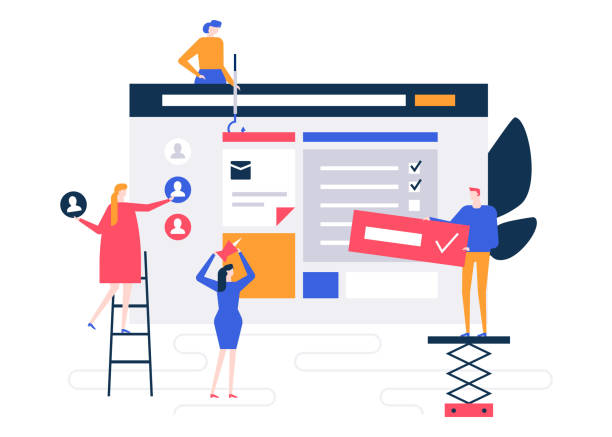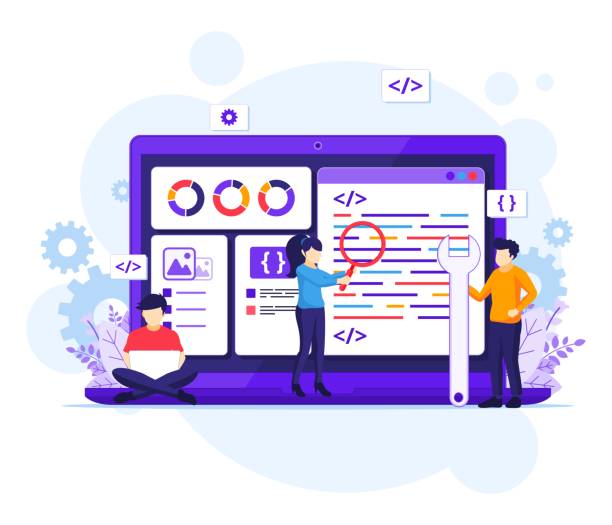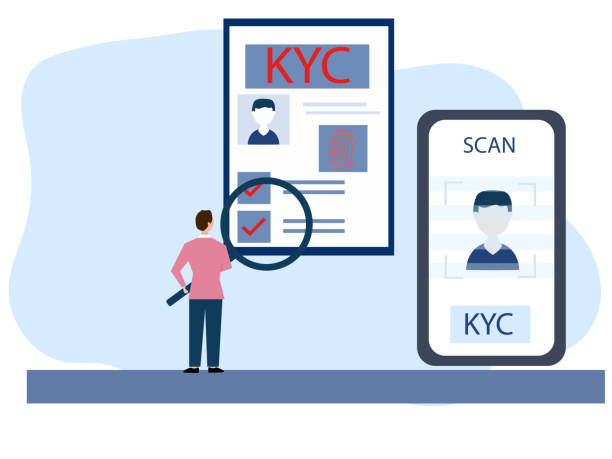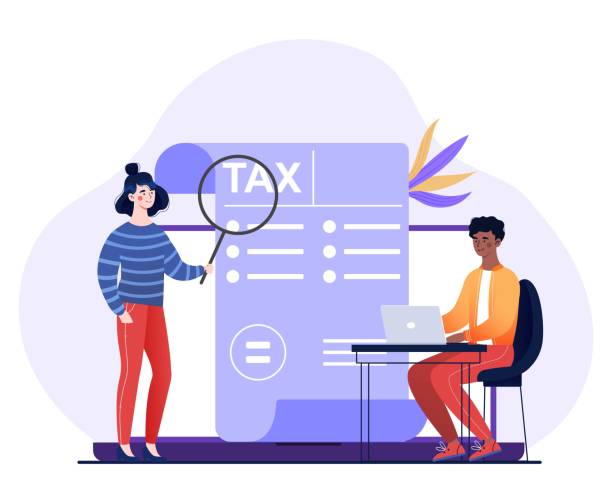Introduction to Professional Website Design: Its Importance and Position

In today’s digital world, having a strong online presence is not just an advantage, but a necessity for any business or individual who wants to remain competitive.
However, simply having a website is not enough; what matters is professional website design that can attract visitors, engage them, and ultimately convert them into customers.
A professional website is the digital storefront of your business, and the first impression audiences will have of you is formed through this website.
This website should not only be visually appealing but also function flawlessly.
#Professional_Website_Design means implementing principles that go beyond mere coding; this includes meticulous planning, content strategy, user experience (UX) optimization, and strong user interface (UI), security, speed, and compatibility with various devices.
An amateur website, not only cannot help achieve your business goals but can also harm your brand’s reputation.
For example, a website that loads slowly, has complicated navigation, or does not display correctly on mobile devices will be quickly abandoned by users.
In fact, professional website design is the backbone of your online success and can make the difference between being seen and being forgotten.
This explanatory and analytical section addresses the importance of this topic and lays the groundwork for subsequent discussions.
A website designed with care and adhering to global standards will not only gain customer trust but also significantly contribute to the growth of your online business.
Are you tired of your company’s website not being seen as it should be, losing potential customers? Solve this problem forever with professional and effective website design by Rasawp!
✅ Increase brand credibility and build customer trust
✅ Attract targeted sales leads
⚡ Contact us now for a free consultation!
Key Elements in Professional Website Design: User Experience and User Interface

At the heart of every professional website design lie two fundamental concepts: User Experience (UX) and User Interface (UI).
These two, although often confused, play complementary roles in ensuring the success of a website.
User Experience refers to the user’s feelings, behaviors, and attitudes while interacting with a website; how easy, enjoyable, and effective it is to use the website.
A great user experience means that the user can easily find the information they need, fill out forms without difficulty, and achieve their goals on the website.
This includes information architecture, user flow, and overall interactions.
On the other hand, User Interface (UI) deals with the visual and interactive aspects of the website: buttons, images, texts, colors, and overall layout.
UI is responsible for the aesthetics and visual appeal of the website.
A good UI is not only beautiful but also intuitive and understandable, guiding users toward desired actions.
In professional website design, expert teams work in parallel on UX and UI.
First, through user research and creating personas, they understand the users’ needs and goals (UX).
Then, based on this understanding, they design visual and interactive elements that are both beautiful and functional (UI).
This educational and specialized section emphasizes the importance of the synergy between these two elements in creating a powerful website.
Search Engine Optimization (SEO) in Professional Website Design

Regardless of how beautiful or user-friendly your website is, if users cannot find it, it loses its true value.
This is where Search Engine Optimization (SEO) comes into play and is recognized as one of the main pillars in professional website design.
SEO is the process of increasing the quality and quantity of traffic to your website through organic search engine results.
It includes a set of techniques and strategies that help search engines better understand your content and display it to relevant users.
| SEO Type | Description | Examples |
|---|---|---|
| On-Page SEO | Optimizing internal website elements to improve search engine rankings. | Keyword usage, meta titles and descriptions, image optimization, URL structure, loading speed, internal links. |
| Off-Page SEO | Activities performed outside the website that affect its ranking. | Backlink building (link building), social media activity, internet marketing, guest blogging. |
This educational and specialized section highlights the importance of selecting appropriate keywords, optimizing URL structure, producing high-quality and keyword-rich content, proper use of title and meta description tags, and improving website loading speed.
Also, image optimization and proper internal linking are among the important on-page SEO factors.
For long-term success, SEO strategy should be considered from the beginning of the professional website design process, rather than being viewed as a post-design phase.
This integrated approach ensures that your website is ready to be seen in search engines from the outset and can attract organic and targeted traffic.
The Importance of Responsiveness and Mobile-Friendliness in Professional Website Design

With the increasing use of mobile devices to access the internet, the importance of responsiveness and mobile-friendliness in professional website design has become crucial.
Responsive Web Design means designing a website that can automatically adapt its size and layout to the screen size of the user’s device (whether desktop, tablet, or mobile).
This means that regardless of what device the user employs to view your website, the user experience will be seamless and optimized.
Texts remain readable, images are correctly scaled, and navigation is easy and accessible.
Google also strongly emphasizes website mobile-friendliness and penalizes websites that do not provide a good mobile user experience in its search results.
This explanatory and guidance section emphasizes the importance of this issue.
A non-responsive website not only frustrates mobile users but can also harm your brand’s reputation and SEO ranking.
To ensure responsiveness, designers use CSS frameworks like Bootstrap or Flexbox and Grid in CSS.
Continuous testing of the website on different devices and screen sizes is also essential to identify and resolve potential issues.
Ultimately, professional website design without a responsive approach will be incomplete and unable to fully meet the needs of today’s audience.
Does your current e-commerce website design lead to lost customers and sales?
Rasawp is your solution with modern and user-friendly e-commerce website designs!
✅ Significant increase in conversion rates and sales
✅ Create strong branding and gain customer trust
⚡ Get a free e-commerce website design consultation from Rasawp!
Website Security and Data Protection in Professional Website Design

In the digital age where information is like gold, website security has become one of the most important concerns in professional website design.
Protecting user data and preventing cyberattacks is not only vital for maintaining your brand’s reputation but also essential for complying with privacy regulations like GDPR.
An insecure website can fall victim to various attacks, including SQL injection, Cross-Site Scripting (XSS), Distributed Denial of Service (DDoS) attacks, and data theft, each of which can be catastrophic.
To ensure security in professional website design, several critical steps must be followed.
The first step is using the HTTPS protocol, which with an SSL/TLS certificate enables encryption of data transmitted between the user’s browser and the website server.
This prevents unauthorized interception of information.
Regularly updating the Content Management System (CMS), plugins, and themes is also highly important, as many attacks occur through vulnerabilities in outdated software.
Using strong passwords and two-factor authentication for the admin panel, filtering user inputs to prevent code injection attacks, and regularly backing up data are also among the essential security measures.
This specialized and guidance section emphasizes the necessity of a comprehensive approach to security at every stage of website design and maintenance to ensure your website is protected against threats.
Choosing the Right Platform for Professional Website Design: WordPress or Custom Coding

One of the key decisions at the beginning of the professional website design journey is choosing the right platform to build the website.
Generally, you have two main options: using Content Management Systems (CMS) like WordPress, or custom coding.
Each of these options has its own advantages and disadvantages that should be weighed against your business needs, budget, and long-term goals.
WordPress, with a vast market share, is one of the most popular and flexible CMSs.
Its advantages include easy installation and setup, thousands of free and paid themes and plugins, a large user community for support, and a user-friendly admin panel that allows non-technical individuals to manage website content.
This platform is highly suitable for blogs, small to medium-sized corporate websites, online stores (with WooCommerce), and portfolios.
On the other hand, custom coding means writing website code from scratch by programmers.
This approach offers infinite flexibility and allows you to implement any feature or functionality you envision, without the limitations of ready-made platforms.
This option is ideal for very large projects, websites with specific security or performance requirements, or unique startup ideas that require custom development.
This analytical and guidance section helps you make the best choice for your professional website design by carefully examining the pros and cons of each method.
The Role of Content and Marketing Strategy in Professional Website Design

A website, regardless of its beauty and technical performance, is just an empty shell without quality content and a strong marketing strategy.
In fact, content is king and plays a pivotal role in attracting visitors, engaging them, and converting them into customers.
Content strategy in professional website design means planning for the creation, distribution, and management of content that answers your audience’s questions and needs.
This includes blog posts, articles, videos, infographics, case studies, and even product descriptions.
Valuable content not only helps improve SEO rankings but also transforms your website into a credible information source, building user trust.
| Content Type | Primary Goal | Examples |
|---|---|---|
| Explanatory/Educational Content | Providing comprehensive information and answering user questions. | Tutorial articles, step-by-step guides, FAQ section. |
| Thought-Provoking/Interactive Content | Stimulating thought, increasing engagement, and attracting users. | Surveys, quizzes, contests, challenging questions. |
| News/Up-to-date Content | Informing about events, trends, or product updates. | Industry news, company announcements, new analytical reports. |
After content creation, the digital marketing strategy comes into play.
This includes promoting content through social media, email marketing, paid advertising, and digital public relations.
Combining professional website design with strategic content and targeted marketing not only brings traffic to your website but also increases conversion rates and helps you achieve your business goals.
This analytical and thought-provoking content section emphasizes the inseparable link between content, marketing, and website design.
The Process of Professional Website Design: From Idea to Implementation

The process of professional website design is a multi-stage journey that begins with the initial idea and continues through launch and maintenance.
Understanding these stages is essential for anyone looking to launch a successful website.
This process usually begins with the discovery and planning phase, where business objectives, target audience, technical requirements, and project budget are carefully defined.
In this phase, market and competitor research is also conducted to identify existing strengths and weaknesses in the online space.
After planning, it’s time for the wireframe and prototype design phase.
Wireframes are basic and simple layouts of page structures that show the arrangement of content and main elements, without focusing on visual details.
Prototypes are more interactive versions that allow users to simulate user flow and interaction with the website.
These steps are crucial for optimizing the user experience and getting initial feedback.
Then, we move into the visual design phase, which includes selecting colors, fonts, images, and icons to reflect the brand’s visual identity.
In the development phase, the website’s code is written; whether using CMSs or custom coding.
At this stage, the website becomes a functional entity.
After development, extensive testing is conducted to ensure proper functionality across different browsers and devices, loading speed, and security.
Finally, the website is launched and made publicly available.
But the process doesn’t end there; maintenance, updates, and data analysis are highly important for continuous website optimization.
This guidance and educational section provides you with a complete overview of a successful professional website design process.
Did you know that poor online store design can drive away up to 70% of your potential customers? Rasawp transforms your sales with professional and user-friendly e-commerce website designs.
✅ Significant increase in sales and revenue
✅ Full optimization for search engines and mobile
⚡ [Get free consultation from Rasawp]
Common Challenges and Solutions in Professional Website Design

Like any complex project, professional website design comes with numerous challenges that designers and clients must be prepared to face.
One of the most common challenges is managing client expectations.
Sometimes clients have unrealistic perceptions of project outcomes or timelines.
The solution is to establish clear and continuous communication with the client from the outset, set realistic goals, and regularly report on progress.
Another challenge is website loading speed.
Slow websites can lead to high bounce rates and low SEO rankings.
To combat this issue, optimizing images, using caching, compressing files, and choosing suitable hosting are key solutions.
Also, compatibility with different browsers and various devices (mobile, tablet, desktop) is a technical challenge that can be resolved using responsive techniques and thorough testing.
Security is also a constant concern.
Websites are always exposed to cyberattacks.
Implementing SSL certificates, regularly updating systems, using strong passwords, and monitoring website traffic are among the measures that must be continuously taken.
Outdated or inappropriate content can also deter visitors.
An active content strategy and a plan for continuous content updates are essential.
This news and analytical section, by providing practical solutions to overcome these challenges, helps you advance your professional website design projects with greater success.
The Future of Professional Website Design: New Trends and Emerging Technologies

The world of professional website design is constantly evolving, and every day we encounter new technologies and trends.
Predicting the future of this field can be both entertaining and informative.
One of the most important future trends is the increasing use of Artificial Intelligence (AI) and Machine Learning (ML) in the design process and personalization of user experience.
AI can help analyze user behavior and dynamically optimize website content and layout for each user.
This will lead to increased engagement and conversion rates.
Augmented Reality (AR) and Virtual Reality (VR) are also finding their place in websites, especially in areas such as e-commerce, education, and entertainment.
Imagine being able to view a product in 3D space or virtually participate in an online tour; these rich experiences will make websites more attractive and functional.
Single Page Applications (SPAs), which offer a user experience similar to mobile applications, will remain popular.
Increased focus on sustainability and Green Design is also expected, where designers will seek to reduce server energy consumption and optimize website performance to minimize carbon footprint.
These trends indicate that professional website design in the future will move further towards personalization, intelligence, interactivity, and sustainability.
Preparing for these changes and staying updated with the latest technologies will be key to success in this dynamic industry.
Frequently Asked Questions
| Row | Question | Answer |
|---|---|---|
| 1 | What is professional website design? | The process of building a user-friendly, visually appealing, fast, secure, and search engine optimized website that achieves business goals and engages the audience. |
| 2 | Why is responsiveness important in professional design? | Responsiveness ensures that the website is displayed correctly on all devices (mobile, tablet, desktop) and provides a consistent user experience, which is also crucial for SEO. |
| 3 | What is the role of UI/UX in professional website design? | UI (User Interface) focuses on the visual aesthetics and appearance of the website, while UX (User Experience) focuses on ease of use, easy navigation, and enjoyable user interaction with the website. Both are essential for attracting and retaining the audience. |
| 4 | How does website loading speed affect its professionalism? | High loading speed improves user experience, reduces bounce rate, and is an important factor in website ranking by search engines. |
| 5 | What is the importance of SEO in professional website design? | SEO ensures that the website is seen in Google and other search engine results, attracts more organic traffic, and helps business growth. |
| 6 | What role does quality content play in a professional website? | Engaging, relevant, and useful content keeps users on the website longer, enhances brand credibility, and is also crucial for SEO. |
| 7 | What does professional website security include? | Using SSL certificates, regular updates of the platform and plugins, regular backups, using strong passwords, and protection against cyberattacks. |
| 8 | What platforms are common for professional website design? | Content Management Systems (CMS) like WordPress and Joomla, as well as coding frameworks like React, Angular, and Vue.js for custom development. |
| 9 | What are the main phases of professional website design? | Planning and research, UI/UX design, coding and development, testing and launch, and finally maintenance and support. |
| 10 | What is the main difference between a professional website and an amateur website? | A professional website is built with a focus on business goals, user experience, security, performance, and optimization, while an amateur website usually lacks these comprehensive and targeted approaches. |
And other services of RasaWeb Advertising Agency in the field of advertising
Smart Conversion Rate Optimization: A dedicated service for online growth based on real data.
Smart Social Media: Revolutionize customer behavior analysis with intelligent data analysis.
Smart Link Building: An innovative platform to improve customer acquisition by optimizing key pages.
Smart Advertising Campaign: A combination of creativity and technology to attract customers through marketing automation.
Smart Link Building: An innovative platform to improve digital branding with Google Ads management.
And over hundreds of other services in the field of internet advertising, advertising consultation, and organizational solutions
Internet Advertising | Advertising Strategy | Advertorial
Resources
Resources:
- Professional Website Design
- Website Design Principles
- The Importance of Professional Website Design for Business
- Features of Professional Website Design
? For your business to leap forward in the digital world, Rasawp Afarin, a specialist in WordPress website design and comprehensive digital marketing solutions, is your smart companion.
📍 Tehran, Mirdamad Street, Next to Central Bank, Southern Kazerun Alley, Ramin Alley, No. 6



